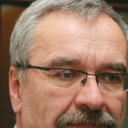Secretion of hydrolytic enzymes by fungal strains, isolated from patients with malignant tumors of head and neck, before, during and after radiotherapy.
Raktažodžiai
Santrauka
One method of treatment used in cancer therapy is radiotherapy which can injure the oral, pharynx or larynx mucosa and predisposes tissue to the development of fungal infections. The aim of the study paper was the mycological examinations of swabs from the oral cavity and pharynx of patients obtained prior to, in week 3, on the last day of and 3 weeks after radiotherapy, as well as isolation of fungi and identification of the selected parameter of strains pathogenecity, i.e. hydrolytic enzyme release. Forty-three patients with oral cavity, pharynx or larynx carcinoma were examined at four points during a course of radiotherapy: before treatment, in week 3 of treatment, on the last day of treatment and 3 weeks afterwards. The mycological examination was conducted based on a procedure introduced in the Department of Biology and Medical Parasitology, Medical University of Lodz. The activity of the hydrolytic enzymes was evaluated with a bioMerieux API ZYM test kit. More than 2/3 of the patients (68.2%) were found to have a fungal infection in the first examination, 4/5 (80%) in the second, about 3/5 (57.1%) in the third and all (100%) in the last examination. The release of enzymes varied, and on different stages show different inactive enzymes: at the start, alpha-chymotrypsin and alpha-mannosidase; at 3 weeks, beta-glucuronidase and alpha-mannosidase; at the end, alpha-chymotrypsin; at 3 weeks after the end, trypsin, alpha-chymotrypsin, alpha-galaktosidase and alpha-fucosidase. The most frequent species isolated from the patients treated by radiotherapy is Candida albicans and C. glabrata. The latter is characterized by resistance to the majority of antimycotic medications. The isolated strains are characterized by the highest activity of leucine arylamidase, acid phosphatase and naphthol--AS-BI-phosphohydrolase. Considering the enzymes produced, most of the strains can be included to biotypes D3, C6 and A.


